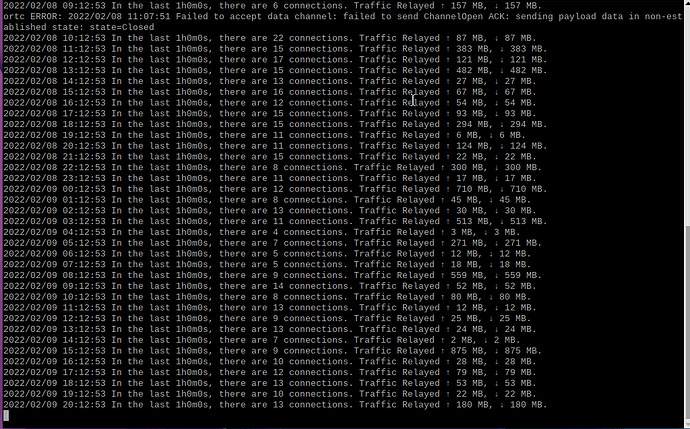Hello! I would like to run a bridge from home and was wondering what hardware and OS you guys recommend. I’m not very tech savvy and will likely need some help further along the process; I’m hoping it’s a setup and forget about it sort of deal (correct me if I’m wrong pls). The Tor website asks to use a BSD OS so which one would you guys recommend? Ideally I want a setup that’s as simple as possible to get running, maintain, and is reasonably future proof. Thanks!
Hello @yummy_onion, do you have a static IPv4 address or do you have a dynamic IP address?
If you have a static IPv4, I would recommend running an obsf4 bridge. But if you have a dynamic IPv4, I would strongly recommend running a standalone snowflake proxy: Tor Project | Snowflake
Snowflake is a new circumvention system and it’s very helpful for Tor users in Russia, China and also other countries too.
The Tor website asks to use a BSD OS so which one would you guys recommend?
We recommend using the OS that you’re more familiar. ![]()
Don’t know which type of IP I have, will get back to you on that. I already run Snowflakes (oddly enough though, I’ve never seen anyone be connected to mine). I’m most comfortable with Windows but don’t want to use that for running anything privacy related on it. Do you have any hardware suggestions?
Hi @yummy_onion I am with a dynamic IP address with a Standalone Snowflake Proxy in a Raspberry PI 3 B+ Buy a Raspberry Pi 3 Model B+ – Raspberry Pi in that proxy I received around 12 users/connections per hour. Hope this info is useful to you.
Like cacu I am also running a snowflake proxy from a RPI3B+. It is connected directly to my home router via Ethernet (no VPN or other hops) and it seems to be working well. At least I am seeing almost constant traffic (and the Ethernet light is blinking like crazy). According to the program speedtest-cli my speed is ~250 Mbit/s up/down. I hope the users are getting OK speeds and that the high number of users isn’t because they are disconnecting in frustration. ![]()
It is very easy to set up, just four commands to compile and run from source. The guide does not mentioned that you run the proxy with ./proxy (which might be obvious to anyone but me ![]() ).
).
So turns out that my ISP only provides dynamic IP addresses to residential customers… I’m willing to try this Rasberry Pi method though! So to make sure I’m understanding this correctly, would the difference between running a bridge and this Rasberry Snowflake method be that the Rasberry would constantly be running as if I had multiple browsers open all the time with the Snowflake extension installed?
Also, how much of a risk is there of getting in trouble with my ISP for running a Snowflake or my IP getting blacklisted from websites?
Please read the Terms and Conditions of your provider. If you have a dynamic IPv4, this is mostly there to prevent you from hosting servers over your residential internet connection (and to get you to upgrade to a more expensive business plan with a static IP).
Running a Pi with snowflake would break those Terms of Services. Will it ever be detected? Depends on the rigor of your provider. I doubt it, but if they detect it you could be in trouble if they disallow server hosting.
Will you ever get blacklisted from websites? No.
I don’t get this. I thought a snowflake proxy would just look like WebRTC traffic.
I know that snowflake traffic looks WebRTC traffic so it it difficult to detect that you are hosting a service. That doesn’t change any facts though. You are still breaking a clause in the contract (if it is there) and are liable for that violation if found out - however difficult finding out might be. Depending on the provider and country, they can terminate the contract with cause, force you into a much more expensive business option and/or ask/sue for damages.
How likely is this scenario? For most ISPs, not very likely.
